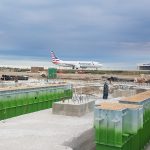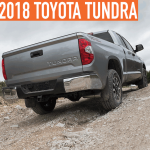The 2018 Isuzu FTR is a medium-duty, low-cab-forward, four-cylinder diesel truck geared for easy and efficient urban pickups, last mile deliveries, and much more. The Class 6 vehicle is suited for various applications, including dry freight, reefer, cement mixer, garbage packer, emergency response, landscape dump, beverage body, stakebed, and rollback carrier. Brian Tabel, head of marketing for Isuzu Commercial Truck of America, Inc., discusses the new FTR, and Isuzu’s innovative Centers of Excellence, Training, and Parts Distribution facilities in California and Pennsylvania.
MWS: ISUZU DEFINES THE 2018 FTR AS A “GAME CHANGER.” HOW HAVE THE 2018 FTRS BEEN RECEIVED, AND WHAT FEATURES ON THE TRUCKS ARE CAUSING THE MOST BUZZ?
TABEL:
The customers are excited to have the Class 6 Low Cab Forward (LCF) with a low cost of ownership.
MWS: WHAT IS DIFFERENT ABOUT THE DESIGN WORK THAT’S GONE INTO THE FTR?
TABEL:
A lot of the design work was done in the United States by our engineering group at the Isuzu Technical Center of America, located in Plymouth, Michigan. It’s new for us to have design work done in the US. Most of the design work has historically been done in Japan.
MWS: HAVE ANY HIT THE SHOWROOM FLOOR?
TABEL:
We started assembling Isuzu FTR’s in early May of this year, and started shipping the trucks to dealers and body companies in mid-June. We had the first delivery of an FTR in late June.
MWS: WHAT’S THE FEEDBACK ON THE FTR’S TIGHT TURNING RADIUS AS IT RELATES TO URBAN PICKUP AND DELIVERY?
TABEL:
The FTR was designed to meet all the needs of maneuverability and visibility of the urban areas for pickup and delivery.
MWS: WHY IS NOW THE PRIME TIME FOR MAKING THE FTR AVAILABLE?
TABEL:
The growing need of population moving to the urban environment makes the FTR the perfect Class 6 truck.
MWS: WHAT MAKES THE 4HK1-TC 5.2L TURBOCHARGED FOUR-CYLINDER ENGINE IN THE FTR A STAND OUT FEATURE?
TABEL:
Continued emission and government standards makes the 4HK the engine for the future. Ten years ago, the most common engine in passenger cars were six cylinders and today it is a four cylinder. You will begin to see the same trend in the truck industry in the years to come.
MWS: WHOSE BRAINCHILD WAS THE EXCELLENCE CENTERS, WHAT IS THEIR ULTIMATE GOAL?
TABEL:
The executive management team wanted to offer our dealers world-class training.

MWS: HOW HAVE THE CENTERS WORKED OUT AND BEEN RECEIVED SO FAR?
TABEL:
The training centers have been successful in training technicians, parts, service, warranty, and sales people.
MWS: HOW MANY HAVE OPENED SO FAR AND WHERE AND WHEN WILL ADDITIONAL ONES BE OPENED?
TABEL:
We have two training centers, one in Anaheim, California, and the other in Pittston, Pennsylvania.
MWS: WHAT IS THE VISION FOR ISUZU COMMERCIAL TRUCKS OF AMERICA, AND THE FUTURE OF MEDIUM-DUTY TRUCKS MOVING FORWARD?
TABEL:
While the forecasters show a steady growth through 2020, Isuzu continues to set sales records in both vehicle and parts sales. In 2017, we launched our new Class 6 truck, and continue to work on our product line to give our customers the best medium-duty truck.
FOR MORE INFORMATION:
The FTR’s engine generates 520 lb-ft of torque and 215 hp, and carries a durability rating of 375,000 miles. Its GVWR is 25,290 lbs; there are eight available wheelbase lengths ranging from 152 to 248 inches, which can accommodate bodies measuring from 14 to 30 ft. Find out more, visit www.isuzucv.com.
_______________________________________________________________________
MODERN WORKTRUCK SOLUTIONS: OCTOBER 2017 ISSUE
Did you enjoy this article?
Subscribe to the FREE Digital Edition of Modern WorkTruck Solutions magazine.
![]()




